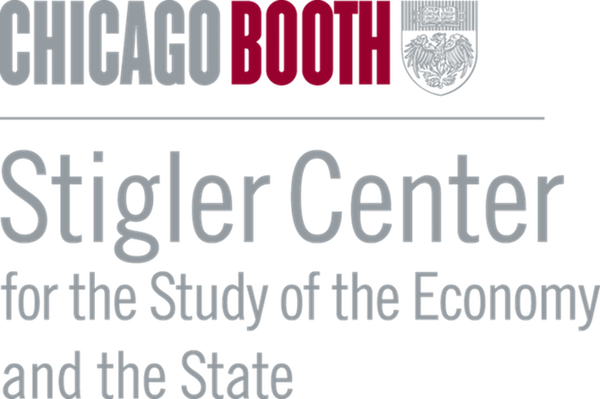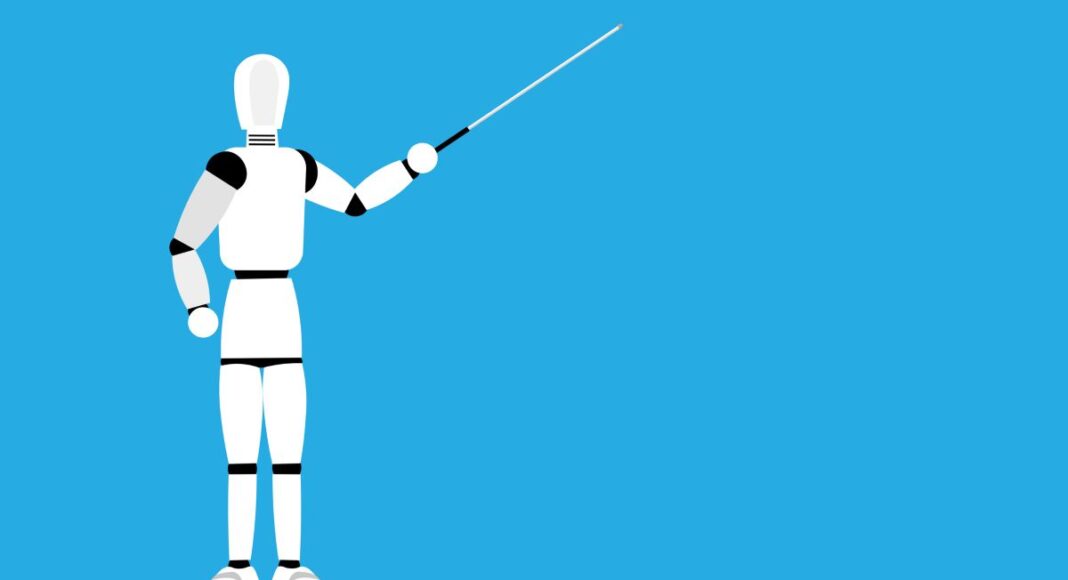Stigler Center Assistant Director Matt Lucky reviews Khan Academy CEO Sal Khan’s recent book, Brave New Words: How AI Will Revolutionize Education (and Why That’s a Good Thing). The book presents an optimistic vision for the educational and pedagogical role of AI-assisted chatbots as personal tutors and teaching assistants. Khan discusses his book with Bethany McLean and Luigi Zingales on this week’s Capitalisn’t episode, which you can listen to here.
In the 1950s, the United States Air Force undertook an effort to redesign its airplane cockpits to fit the average dimensions of its pilots in the hopes that a new design would mitigate the rate of pilot errors. In this process, they took 10 bodily measurements from just over 4,000 men and discovered, for their efforts, that not a single human body in their sample was consistently average across all 10 measures. An average man might exist in the realm of Plato’s ideal Forms and be represented mathematically, yet all of us fleshy creatures in the real world deviate from the norm in some way. The point of this story is that it is often impossible to design a single inflexible standard product, service, institution, or system that works for everyone (or in the Air Force’s experience, anyone).
Similar pains have long afflicted mass education as individual students are force-fitted into standardized pedagogical molds. Sal Khan, the founder of the educational nonprofit Khan Academy, contends in his recent book, Brave New Words: How AI Will Revolutionize Education (and Why That’s a Good Thing), that new advances in artificial intelligence systems may offer a solution. In Khan’s assessment, learning in a standard classroom is inherently suboptimal because a teacher must provide the same lesson to some 30 children of varying skill levels and modes of learning, which usually entails aiming for the average in the classroom. This means there will be a subset of students who are bored out of their youngling minds because the lesson is too easy, sitting alongside desperately lost and frustrated classmates who cannot follow the lecture. As with designing a cockpit seat, aiming for a standard lesson plan that averages across everyone’s skill sets may create a classroom that works for no one. Khan laments that often today, “kids learn to sit in rows, make no noise, and take notes. They are spoon-fed knowledge and forced to learn in lockstep. Both academically and socially, nonconformity is punished.” The logic of scale in the industrial mass production of diplomas within ever-tighter school budgets appears to necessitate suboptimal results here as we force minds into standardized molds.
Khan contends that we have known for millennia that one-on-one instruction with a personal tutor provides students with a superior experience. On several occasions, he invokes how Alexander the Great had such a tutoring experience with the renowned Greek philosopher Aristotle. Individualized pedagogies allow tutors to tailor the difficulty of lessons to the skills of a student and to allow the student’s unique passions to guide instruction. Put differently, a tutor is to education what an adjustable seat is to a cockpit. The limitation to such tutoring, of course, is that we cannot easily scale up one-on-one instruction to a population of approximately 50 million public K-12 students in the U.S. The Princeling of Macedonia may have been afforded Greece’s second greatest philosopher as a personal instructor (Plato is more fun!), but the public will not be so lucky today.
This is where AI systems enter the picture. Khan proposes deploying Khan Academy’s Khanmingo to provide personalized AI tutors to students at scale. In crafting this vision of a world where every student has a synthetic Aristotle, Khan wears his science fiction inspirations proudly, as he frequently reminds readers with references to Star Trek, The Foundation, and The Diamond Age. His optimism stands in juxtaposition with contemporary worries that AI is ravaging education as we know it through rampant cheating and generally “brain-rotting” our minds with the pestilence of ubiquitous AI slop. Such fears of emerging technologies wrecking our cognitive faculties are, of course, as old as Plato’s lamentation that “[writing] will create forgetfulness in the learners’ souls, because they will not use their memories; they will trust to the external written characters and not remember of themselves.”
Khan is very aware of these and many other common concerns regarding the impacts of AI systems generally, and especially in education. A significant portion of the conversation he composes in Brave New Words aims to address this host of worries case-by-case by working through how Khanmingo has been designed to address those familiar concerns, including chatbots facilitating plagiarism, stunting social and emotional development, algorithmic biases, and machines supplanting human creativity.. In that sense, Khan’s book reads in part like a user experience design history, documenting known problems in existing use cases and the technical responses that have been implemented in Khanmingo to cure those ills.
For instance, to the blight of students employing AI to cheat their way through every writing assignment, Khan offers that AI systems, such as Khanmingo, can be designed with guardrails that allow the system to offer advice on existing writing, but not compose at length in the student’s voice and place. Further, AI may surveil the writing process and report to teachers if students attempt to enlist the illicit assistance of more sycophantic chatbots in their writing.
In a similar fashion, Khan describes how an AI tutor in math can be designed specifically to withhold direct answers from students and instead offer mere hints that force the student to exercise their mental faculties for a solution. In one example, Khan describes a student practicing the distributive property in algebra, submitting their question and answer pairs to the AI. For questions where the student makes an error, the AI, instead of directly correcting the student and displaying the correct operations, will prompt the student to write out their reasoning process and flag misconceptions in need of reconsideration. This is offered as a general illustration of the target for AI tutors in this book. They ought to be Socratic guides who encourage learners to tease out ideas through targeted questioning rather than furnishing direct answers to inquiries. In this sense, a good AI tutor is unhelpful in the right way, applying a mix of friction and assistance to the learning process that trains mental faculties through use.
Perhaps, then, Khanmingo offers a better future for instructing students, but his vision raises the question of what the future role of teachers is in an AI-EdTech world. Khan is emphatic in repeatedly predicting, “there’s no job that is safer in the large-language-model world than teaching. Not only are teachers irreplaceable, but AI is going to support teachers.” More precisely, he predicts a new division of labor where AI affords every teacher the equivalent of three teaching assistants that assist with grading, lesson plan development, and monitoring student progress. Meanwhile, the human instructor shifts to a flipped classroom model of instruction, where instruction takes place at home (with, for instance, Khan Academy on-demand videos and AI instruction), and the in-class time is devoted to assignments and Socratic dialogues. Put simply, teachers will spend much more time engaging with students in activities and active learning, and lecturing will fall out of importance.
At the conclusion of Brave New Words, Khan’s optimistic vision for how AI may improve, rather than devour, education if we make the correct decisions, left me in a more positive position than at the outset. That said, I will confess that I retain points of concern, perhaps owing to my resting skepticism of how humans are deploying and adapting to contemporary AI systems. For instance, while Khan is insistent that he does not anticipate AI systems will reduce teacher employment, a point he reiterates clearly in his recent interview with Capitalisn’t, I have difficulty crediting that claim in the long run. That is, while I do not expect that AI will eliminate teaching jobs in the short term, today, when the next harsh economic downturn hits, state legislators will need to carve their way out of a budget deficit. To the gaze of politicians confronting a multibillion-dollar budget hole, casting aside half the state’s teachers into a heap of offal under the rationale that AI will pick up the slack starts to look more like a free lunch than unthinkable madness. The point here is that, regardless of how “well” Khanmingo or other AI systems for education are designed, there will be downstream political economy influences on their use cases that are beyond the control of Khan and other EdTech actors.
In a second line of concern, while reading Brave New Words my mind repeatedly returned to this quote from a student in The New York Magazine: “I spend so much time on TikTok,…Hours and hours, until my eyes start hurting, which makes it hard to plan and do my schoolwork. With ChatGPT, I can write an essay in two hours that normally takes 12.” The point here is that whatever relationship students and teachers establish with Khanmingo and other AI in the classroom, that ought to be contextualized within the all-consuming digital ecosystems of devices, chatbots, and apps that occupy the remainder of our lives.
That is, Khanmingo is not the only gadget wiring up students’ brains; every device and app (as with TikTok above) contributes to forming neural connections for good and bad. The same tablet or laptop that a student uses to engage with Khanmingo for assistance with developing long-form reading skills is also the same device critics contend addicts them and shrinks their attention spans. Likewise, while Khan contends that AI like Khanmingo can help children to be more mindful of their mental health, Khanmingo is living on the same devices that isolate and depress us. Khan and his nonprofit are endeavoring to use emerging technologies to assist children in wiring up their brains to grow well-adjusted, skillful, and critically thinking adults. Yet that work is occurring inside devices overwhelmingly populated by the products of for-profit companies working toward opposing ends. If AI in education is going to work, we will need students who want to engage with it and who want to learn, rather than being ceaselessly blown about by a whirlwind of digitally disciplined appetitive urges like the denizens of the second circle of Dante’s Inferno. Khan and his team may develop a perfect AI Aristotle freely available to all around the world. But if the for-profit tech products outside the classroom continue to break our brains so that we desire nothing but infinite scrolling through slop, then this may be Sisyphean: the good labor Khan puts into elevating young minds may be negated by the gravity of the surrounding technosystem pulling students back down. Thus, getting AI in education right may entail more than designing Khanmingo well, but also inculcating beneficial habits with every other tech product outside the classroom. Ultimately, Khan offers a welcome vision of a future where we get things right with AI in education; I simply worry we will want for the wisdom to realize what he offers.
Author Disclosure: The author reports no conflicts of interest. You can read our disclosure policy here.
Articles represent the opinions of their writers, not necessarily those of the University of Chicago, the Booth School of Business, or its faculty.
Subscribe here for ProMarket’s weekly newsletter, Special Interest, to stay up to date on ProMarket’s coverage of the political economy and other content from the Stigler Center.






